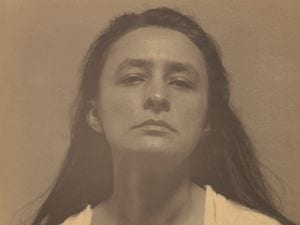Over its fourteen-year lifespan the Whitstable Biennale has earned a solid reputation for promoting artists working predominantly in sound, installation and film. Its theme this year – The Faraway Nearby – is an inspired choice. Whitstable’s lovingly maintained seafood shacks, ice cream parlours and tourist shops qualify its place within the pantheon of British Seaside Towns – perfect for meditations on the homely. Yet Kent is also the first point of contact for immigrants entering the UK, and the county is under increasing pressure to accommodate displaced peoples. The forty-five artists whose work is on view in Whitstable tussle with concepts of resident and alien, the familiar and the unfamiliar, the self and the other – and the site suits the sights.
Parlour Walls by artist duo Webb-Ellis, which is tucked away in the town’s library lecture room, consists of a triptych of screens displaying three interconnected films. The 20-minute piece meanders through a subtle patchwork of video, covering the migration of eels across the Atlantic, ASMR role-play clips from YouTube, and interpretative dance featuring teenagers in tin foil survival jackets. The camera slides between these scenes, interposing them with slow-moving shots of rivers and coasts, all set to a soundtrack inspired by ancient Hebridean psalm-singing. The artists cite Ray Bradbury’s novel Farenheit 451 as an influence, but the themes of frustrated communication between people and the natural environment extend bewitchingly beyond the original inspiration.
Sharing some of the ideas of Parlour Walls is Sarah Wood’s intelligent essay film Boat People, tucked away in a shed on the harbour. It casts a long view on the notion of displacement and homelessness, involving Homer’s Odyssey, Britain’s historic self-identity as a seafaring nation and the effect of inventions (from the telescope to the digital image) on our perception of near and far. The film’s archive imagery and flat narrative voice-over successfully gets across the message that individual feelings about the ‘self’ and the ‘other’ manifest themselves in much larger historical, cultural and geo-political events.
Becca Voelcker’s Island, which can be found in the Horsebridge Arts Centre, comes across as a much more straightforward documentary, eschewing authorial interpretation. The 28-minute film shows the community living on an island thousands of miles from the southwest seaboard of Japan. Episodes in the lives of the island’s inhabitants are pieced together, building up a picture of their distinctively hybrid societal identity.
The art that focuses on the local is more playful. Whitstable’s tourist heritage is explored in Marcia Farquhar’s film (and novelty ice-cream) Rooty Tooty, available to see and taste on Harbour Street. Richard Layzell’s bizarre mini-tour Softly Softly also directs your gaze to the nearby, combining local history and childish antics in unexpected ways. Four shops along Harbour Street and Oxford Street are home to Alice Butler’s Letters of Love – a work that involves four books written by the artist which you are encouraged to steal and read. Each volume focuses on a female writer – three American and one British. One story links to the next, leading you on a trail of Butler’s fandom – a fascinating way to explore the local and the exotic at the same time.
“The Faraway Nearby” was originally the phrase Georgia O’Keeffe used to sign off her letters from Mexico – it was adopted by Rebecca Solnit as a title for her novel published in 2013. The 2016 Whitstable Biennale is a credit to both women – it is a carefully curated, intelligent and distinctive event.
Matthew Wilson
The Whitstable Biennale ran from 3-12 June. www.whitstablebiennale.com
Credits:
1. Becca Voelcker, Island, (2015). Video still. © the artist.




